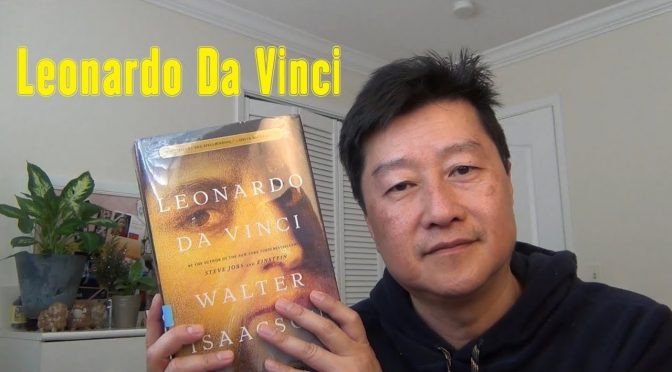When I say “Leonardo,” you say? Most people would say “Di Caprio.” No, today I’m going to tell you and show you the story of Leonardo Da Vinci – an imaginative, ever curious and creative genius across multiple disciplines.
Ever wondered how the tongue of a woodpecker look like? Not I but he did. He noted on his notebook to look into it.
Leonardo Da Vinci was born in 1452 in a little town, Vinci, near Florence, Italy. “Da Vinci” wasn’t really his surname but a way to identify him as the Leonardo from Vinci. He was born out of wedlock to a long lineage of notary professional. Luckily as an illegitimate son of Piero, he wasn’t able and willing to carry on the family tradition of notary.
As a “bastard,” he was never properly educated in Latin school to be a man of letters, instead he was mostly self-taught and become a disciple of experience and experiment. He lived through most of his childhood in Vinci until his step mother died in childbirth and his grandfather died shortly after. His father brought him, a teenager, to Florence, the birthplace of the Renaissance era and center of finance, trades, arts and knowledge. The city was run by wealthy bankers, then the innovators of debit-credit bookkeeping, who could afford to sponsor artists and entertainments like plays and carnivals. Think Manhattan, NY.
Recognizing Leonardo’s talents at 14 years old, his father secured an apprenticeship with one of his clients, Verrocchio, who ran one of the best workshops / sweatshops in Florence. This was where the students cranked up paintings, statutes for rich clients. When his father brought a wood shield for him to paint, he turned into an image of fire-breathing dragon-like monster with parts from dead animals like lizards, snakes, and bats.
In painting, his genius lied in his ability to see and deploy light and shade in ways that would produce the illustration of three-dimensional effect because of human eyes in resolving direct vs peripheral views.
Through his work in theatrical set, he mastered the theatrical movements, human expressions. His curiosity about human anatomy drove him to dissect at least 30 corpses. This was before refrigeration was invented so the dissection typically stopped when the smell from decaying flesh got to him. He came up with the theory about how human heart value work that was confirmed in 1950’s, more than 4 centuries after.
Leonardo was fascinated with military engineering. He conceptualized helicopter and came up with various military weapon designs like the chariots, giant bow machines.
Due to his curiosity about just everything in nature, he was frequently delinquent in delivering his work. He had to move around to find patrons. He moved around Florence, Milan and Rome.
One of his famous paining is the Last Supper. This was painted on the wall of Convent of Santa Maria delle Grazie in Milan.
In his middle age, he was frequently compared to the Michelangelo, who was 23 years younger. Both were openly gay and wonderfully talented. No wonder it was called the Renaissance.
Mona Lisa was one of the paintings that he continued to perfect until his death
In his old age, he moved to France as King Francis I became his final patron. He died in 1519 at age of 67.
Leonardo Da Vinci left us with at least 15 paintings without his signatures, 7200 pages of undated notes that left us intrigued about him as he was intrigued by nature, and wonders of the world.

